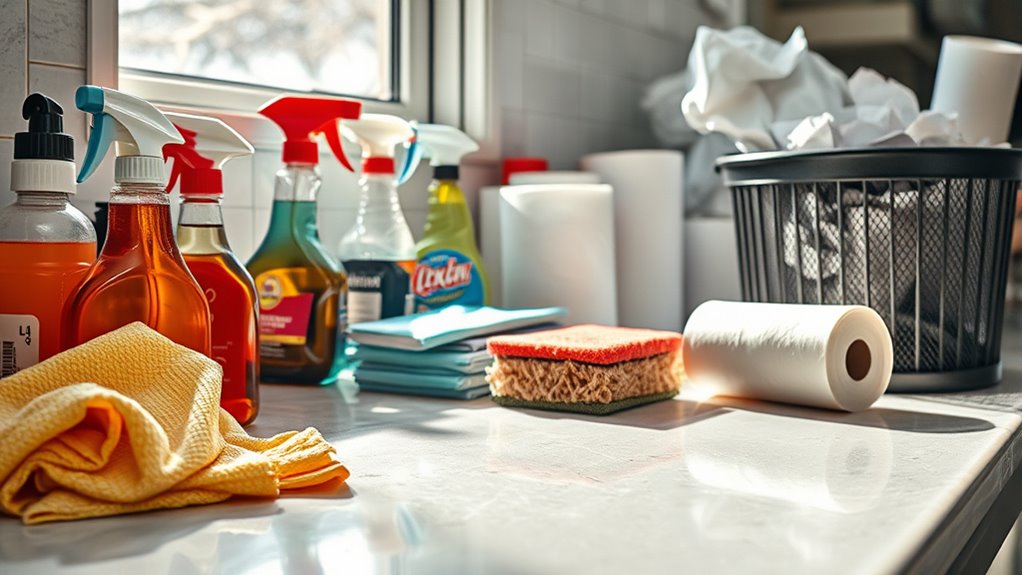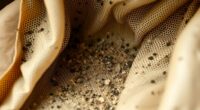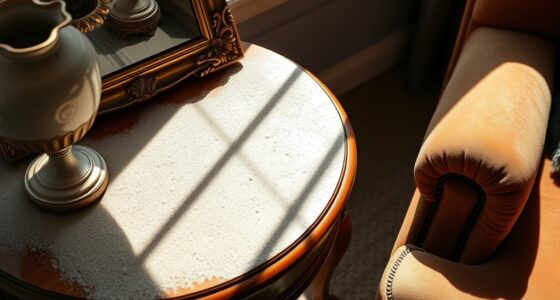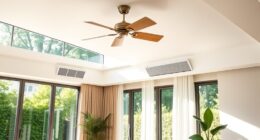Many common cleaning habits can actually be harmful if done improperly. Overusing disinfectants on every surface can cause chemical buildup and damage. Sweeping without mopping or vacuuming just moves dirt around and worsens air quality. Relying solely on bleach may harm surfaces and limit sanitation. Using the same cloth across areas spreads germs easily. Ignoring ventilation traps fumes and airborne particles. Stick around to discover smarter ways to clean and keep your home safe.
Key Takeaways
- Overusing disinfectants on all surfaces can cause chemical buildup and surface damage.
- Sweeping too often without mopping or vacuuming merely redistributes dust, reducing cleaning effectiveness.
- Relying solely on bleach may harm surfaces and fail to target all germs effectively.
- Using the same cloth across multiple areas spreads bacteria and cross-contaminates surfaces.
- Cleaning in poorly ventilated spaces traps fumes and airborne pollutants, worsening indoor air quality.
Overusing Disinfectants on Every Surface
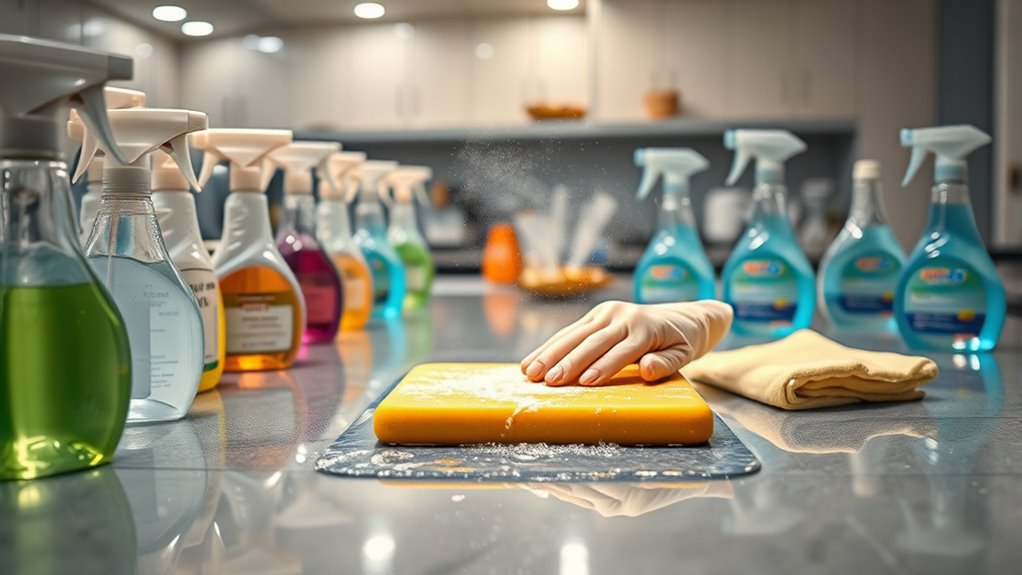
While disinfectants are essential for killing germs, overusing them on every surface can do more harm than good. Constantly applying strong chemicals leads to chemical buildup, which can weaken surfaces over time. This buildup makes surfaces more prone to staining, discoloration, and deterioration. Additionally, excessive disinfectant use can cause surface damage, especially on materials like wood, laminate, or painted surfaces. These chemicals can erode finishes and compromise the integrity of your belongings. Instead of disinfecting every surface daily, focus on high-touch areas and use milder cleaning methods elsewhere. Properly balancing disinfectant use helps maintain surface quality while still keeping germs at bay. Overdoing it can backfire, leading to costly repairs and reducing the lifespan of your household surfaces. Understanding the impact of chemicals can help you make more informed cleaning choices.
Excessive Sweeping Without Mopping or Vacuuming
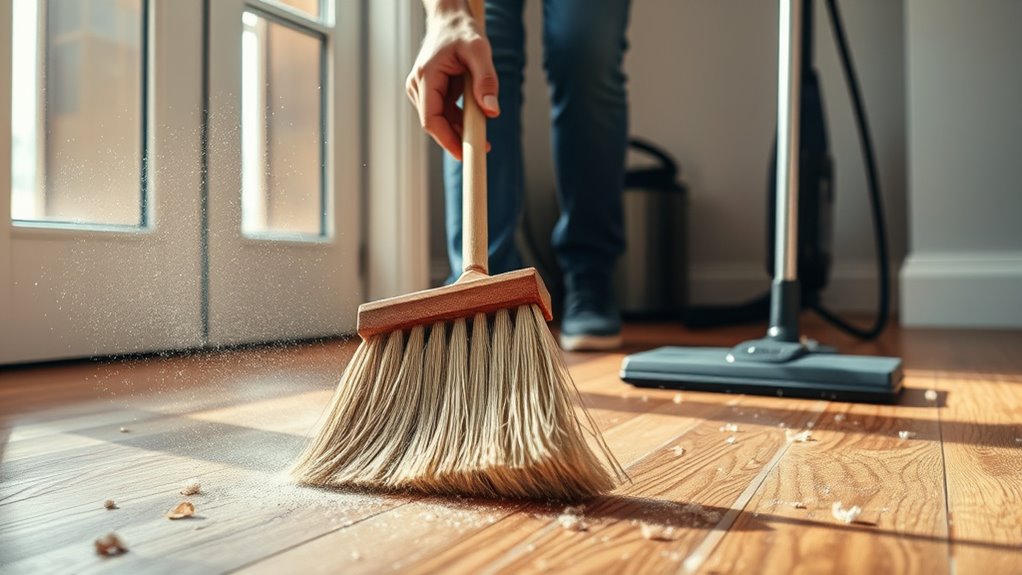
Sweeping your floors frequently without following up with mopping or vacuuming can actually do more harm than good. When you sweep too often, dust accumulation is pushed around rather than removed, leading to dirt redistribution across surfaces. Instead of cleaning effectively, you may be spreading debris into the air or into corners that are hard to reach. This can worsen indoor air quality and make your home feel dirtier over time. Additionally, sweeping alone often leaves behind fine particles that can settle into carpets or settle on surfaces, requiring more effort to clean later. To truly maintain a clean home, combine sweeping with regular vacuuming or mopping. This ensures dust and dirt are properly removed, preventing buildup and promoting a healthier environment. Proper cleaning techniques can significantly improve indoor air quality and overall cleanliness.
Relying Solely on Bleach for All Cleaning Tasks
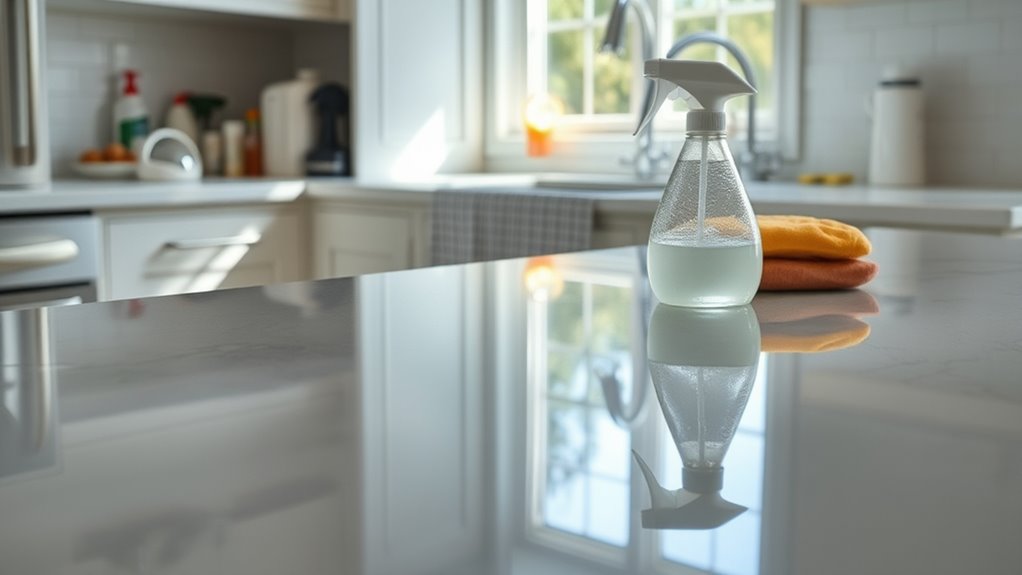
Relying solely on bleach for all cleaning tasks can be problematic because it doesn’t address the diverse needs of different surfaces and germs. Using only bleach in your cleaning routines may lead to ineffective sanitation and potential surface damage. Not all germs respond well to bleach, and some surfaces—like wood or fabric—can be harmed. Additionally, relying only on one disinfectant limits your ability to target specific bacteria or viruses effectively. To improve your cleaning habits, consider incorporating a variety of surface disinfectants tailored to different areas. Surface diversity is important in choosing the right cleaning agents to ensure comprehensive sanitation and surface preservation.
Using the Same Cloth for Multiple Areas
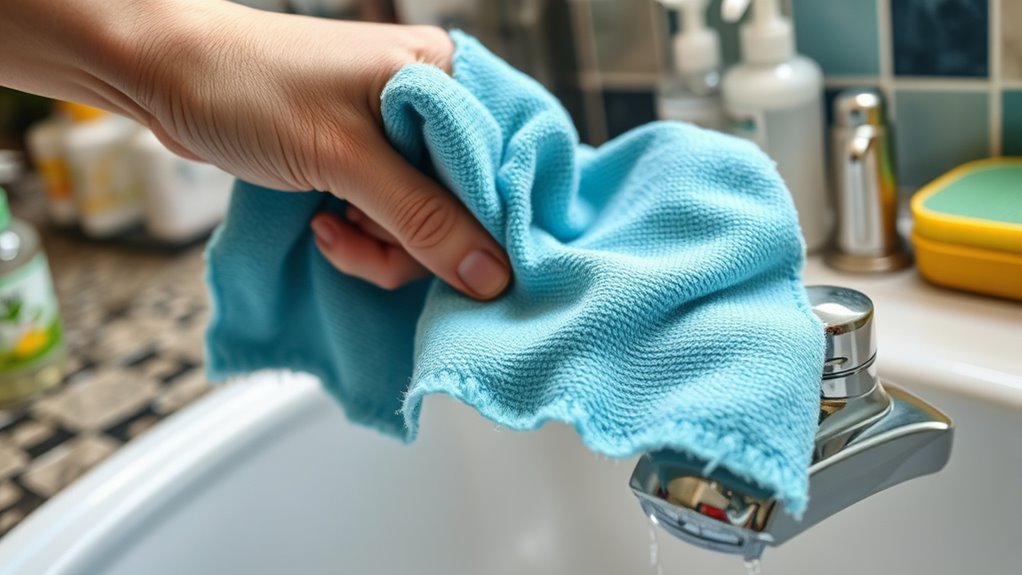
Using the same cloth to clean multiple areas can spread germs and bacteria from one surface to another, increasing the risk of cross-contamination. If you don’t change or wash your cloth frequently, you’re effectively transferring dirt, bacteria, and viruses between surfaces, which can undermine your cleaning efforts. To reduce these cross contamination risks, it’s essential to adjust your cloth replacement frequency based on what you’re cleaning. Use separate cloths for different areas—like the bathroom and kitchen—or designate specific cloths for specific tasks. Regularly laundering cloths after each use helps eliminate bacteria and prevents buildup. Skipping this step can lead to bacteria spreading, making your cleaning less effective and potentially harmful. Always prioritize clean cloths to maintain a healthier, safer environment. Incorporating digital literacy programs can also help seniors learn proper cleaning and safety protocols.
Ignoring the Importance of Proper Ventilation During Cleaning
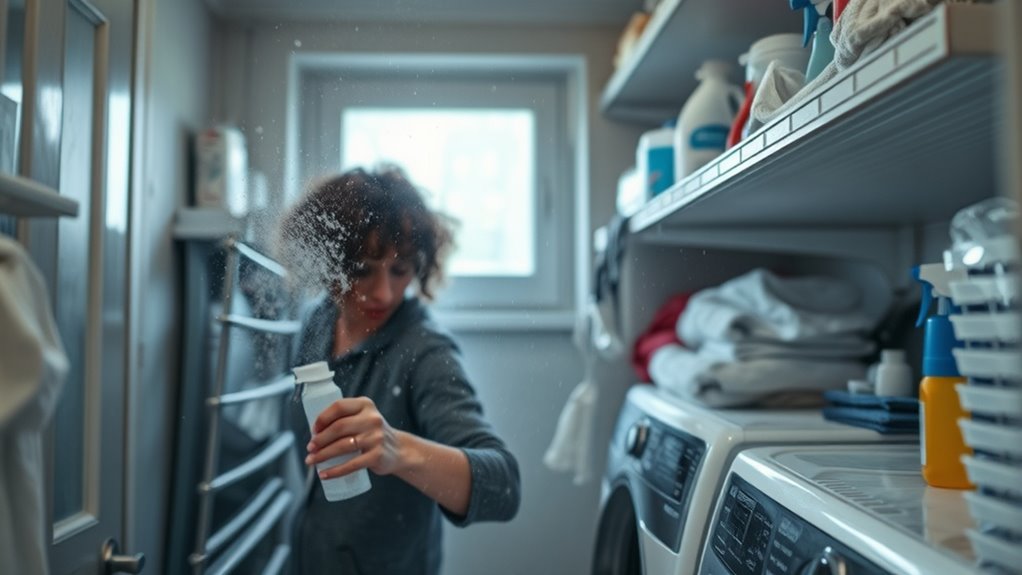
Neglecting proper ventilation while cleaning can undermine your efforts to create a healthy environment. Without adequate air circulation, airborne particles and cleaning fumes can linger, worsening indoor air quality. Poor ventilation also hampers odor removal, leaving lingering smells behind. To improve ventilation:
Proper ventilation is essential to prevent lingering fumes and odors during cleaning.
- Open windows widely during and after cleaning
- Use exhaust fans in kitchens and bathrooms
- Turn on ceiling fans to promote air flow
- Keep air purifiers running for better air quality
- Avoid sealing rooms completely during cleaning
These steps help disperse airborne contaminants, reduce chemical buildup, and clear odors faster. Proper ventilation ensures your cleaning efforts aren’t compromised by stale air or hidden pollutants, making your space healthier and fresher. Remember, good air circulation is key to effective cleaning and maintaining a breathable environment. Additionally, understanding air quality and how to manage it effectively can prevent long-term health issues related to indoor pollutants.
Frequently Asked Questions
Can Over-Cleaning Weaken My Home’s Natural Defenses?
Over-cleaning your home environment can weaken its natural defenses. When you use harsh chemicals or excessive disinfectants, you may eliminate beneficial microbes that help protect against harmful bacteria and viruses. This disrupts the balance of your home’s natural defenses, making it more vulnerable to illness. To maintain a healthy environment, focus on gentle cleaning methods and avoid overdoing it, allowing your home’s natural defenses to stay strong and effective.
Are There Safer Alternatives to Bleach for Cleaning?
Oh, sure, you could stick with bleach, but why not embrace natural cleaners instead? They’re safer and reduce your chemical exposure, helping you avoid harsh fumes and potential health risks. Vinegar, baking soda, and lemon are surprisingly effective for most cleaning tasks. Not only do these alternatives keep your home sparkling, but they also protect your well-being. Who knew that going natural could be so smart?
How Often Should I Replace My Cleaning Cloths?
You should replace your cleaning cloths regularly to maintain proper microfiber maintenance and guarantee effective cleaning. Generally, it’s best to swap them out every 1-2 weeks, depending on use and cleaning frequency. If you notice stains, a persistent odor, or frayed fabric, replace them sooner. Regularly laundering cloths also helps, but replacing them periodically prevents bacteria buildup and keeps your cleaning routine hygienic and effective.
Does Poor Ventilation Affect Indoor Air Quality During Cleaning?
Imagine your home as a living organism, breathing with every fresh gust of air. Poor ventilation hampers air circulation, causing pollutant buildup and trapping dust, chemicals, and allergens. When you clean, these pollutants linger longer, reducing indoor air quality. Proper ventilation acts like a lifeline, dispersing airborne particles and freshening the space. Without it, your cleaning efforts may unintentionally leave behind harmful pollutants, making good air quality harder to achieve.
What Are the Long-Term Effects of Excessive Sweeping?
Excessive sweeping can lead to long-term issues like dust accumulation and hardwood damage. When you sweep too often, you might push dust deeper into crevices or scratch wooden floors with harsh bristles. Over time, dust buildup can worsen allergies and reduce air quality, while frequent scraping may cause scratches and wear on hardwood surfaces. To protect your floors and indoor air, sweep gently and only as needed.
Conclusion
By avoiding these common cleaning mistakes, you can transform your home into a sanctuary of genuine cleanliness. Overusing disinfectants, relying solely on bleach, or neglecting proper ventilation can turn your efforts into a losing battle against germs. Instead, adopt balanced habits and smarter routines. Remember, a reckless cleaning spree could turn your space into a chemical wasteland—don’t let your good intentions backfire. Clean wisely, and your home will shine brighter than you ever imagined.
